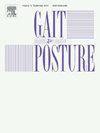Comparing sensory organization test measures of the Bertec® Balance Advantage® CDP/IVRTM and NeuroCom® Smart EquiTest® computerized dynamic posturography systems in young and older healthy adults
IF 2.2
3区 医学
Q3 NEUROSCIENCES
引用次数: 0
Abstract
Background
The Sensory Organization Test (SOT) on computerized dynamic posturography (CDP) platforms is a tool used to assess standing balance. The Neurocom Smart Equitest (Natus Balance & Mobility, Inc.) is an established CDP device and has been used in clinics and research since the 1980s. However, it is no longer produced nor maintained. Recently a new platform, the Bertec® Balance Advantage® CDP/IVRTM (Bertec Corporation, Columbus, OH), has come onto the market as a potential replacement for the NeuroCom. The two systems use different techniques for manipulating visual inputs, and thus it is unclear if performance measures from the two systems are comparable.
Research question
The primary aim was to compare intrasubject SOT performance on Bertec CDP/IVR and NeuroCom EquiTest platforms. The second aim was to compare SOT performance for young and older healthy adults on the two platforms.
Methods
Thirty-one (N = 31) participants were recruited and divided in two age groups (Older, Young). All participants attended two sessions of testing approximately one week apart. At each session, the standard clinical SOT (six conditions, three 20 s trials each) was conducted on one of the balance platforms. SOT performance was assessed via sway measures: the root-mean-square (RMS) and mean velocity of the center of pressure, as well as the standard Equilibrium (EQ) Score.
Results and significance
There were significant differences in the measures of sway between the Bertec and Equitest platforms, particularly conditions 4–6. As expected, there were significant differences in sway metrics between the young and older participants. However, both age groups were consistent within each of the two platforms. These results indicate that new normative databases may need to be established specific to the Bertec system, and that results of the two systems should be compared with caution. Further research with a larger sample and diverse populations is needed.
比较Bertec®Balance Advantage®CDP/IVRTM和NeuroCom®Smart EquiTest®计算机动态姿势测量系统在年轻和老年健康成年人中的感觉组织测试措施
计算机动态姿势测量(CDP)平台上的感觉组织测试(SOT)是一种用于评估站立平衡的工具。Neurocom智能股票测试(Natus Balance &;Mobility, Inc.)是一种成熟的CDP设备,自20世纪80年代以来一直用于临床和研究。然而,它不再生产和维护。最近,一种新的平台Bertec®Balance Advantage®CDP/IVRTM (Bertec Corporation, Columbus, OH)作为NeuroCom的潜在替代品进入市场。这两个系统使用不同的技术来操纵视觉输入,因此不清楚这两个系统的性能指标是否具有可比性。研究问题主要目的是比较在Bertec CDP/IVR和NeuroCom EquiTest平台上的受试者内部SOT表现。第二个目的是比较两个平台上年轻和年长健康成年人的SOT表现。方法招募31名参与者(N = 31),分为老年、青年两组。所有参与者大约间隔一周参加两次测试。在每个阶段,在一个平衡平台上进行标准临床SOT(六种情况,每种情况进行三次20 试验)。通过摇摆测量来评估SOT的表现:均方根(RMS)和压力中心的平均速度,以及标准平衡(EQ)评分。结果和意义Bertec和Equitest平台之间的摇摆测量有显著差异,特别是条件4-6。正如预期的那样,年轻和年长的参与者在摇摆指标上存在显著差异。然而,这两个年龄组在两个平台上都是一致的。这些结果表明,可能需要为Bertec系统建立新的规范数据库,并且应该谨慎地比较这两个系统的结果。进一步的研究需要更大的样本和不同的人群。
本文章由计算机程序翻译,如有差异,请以英文原文为准。
求助全文
约1分钟内获得全文
求助全文
来源期刊

Gait & posture
医学-神经科学
CiteScore
4.70
自引率
12.50%
发文量
616
审稿时长
6 months
期刊介绍:
Gait & Posture is a vehicle for the publication of up-to-date basic and clinical research on all aspects of locomotion and balance.
The topics covered include: Techniques for the measurement of gait and posture, and the standardization of results presentation; Studies of normal and pathological gait; Treatment of gait and postural abnormalities; Biomechanical and theoretical approaches to gait and posture; Mathematical models of joint and muscle mechanics; Neurological and musculoskeletal function in gait and posture; The evolution of upright posture and bipedal locomotion; Adaptations of carrying loads, walking on uneven surfaces, climbing stairs etc; spinal biomechanics only if they are directly related to gait and/or posture and are of general interest to our readers; The effect of aging and development on gait and posture; Psychological and cultural aspects of gait; Patient education.
 求助内容:
求助内容: 应助结果提醒方式:
应助结果提醒方式:


